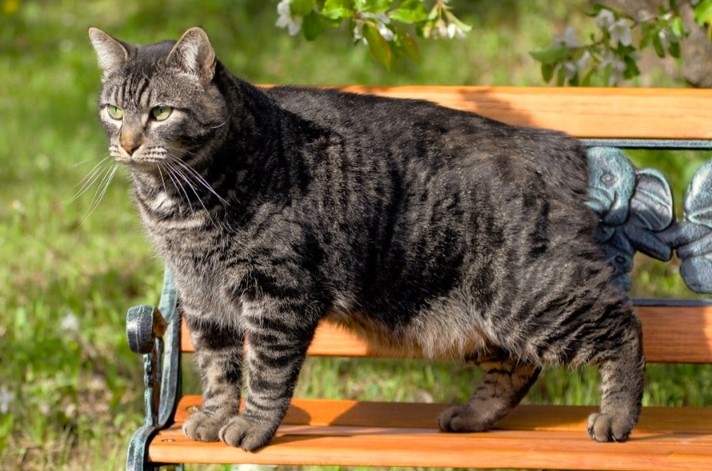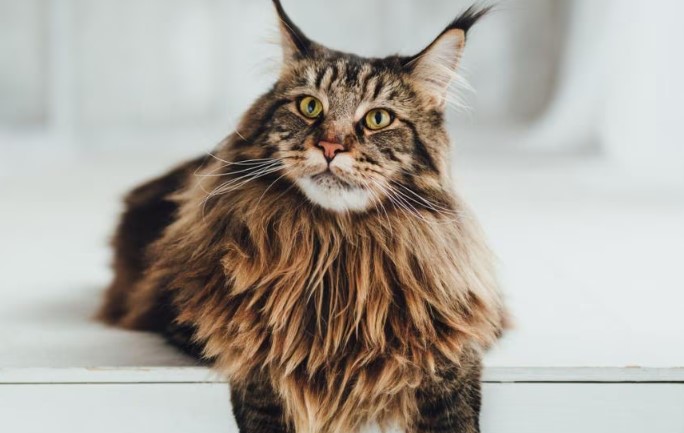
Physical Features
Manx cats are renowned for their distinctive appearance, characterized by a compact body structure and a unique taillessness. Their sturdy build and rounded contours contribute to their adorable charm. Despite their lack of a conventional tail, Manx cats exhibit remarkable agility and grace in their movements.
Coat Types
The Manx breed showcases a variety of coat types, catering to different preferences among cat enthusiasts. Short-haired Manx cats feature sleek coats that require minimal grooming, while long-haired varieties boast luxurious fur that adds to their allure. Both coat types come in an array of colors and patterns, ranging from solid shades to intricate markings.
Color Patterns
From solid black to calico and everything in between, Manx cats exhibit a kaleidoscope of color patterns that enhance their visual appeal. Whether adorned with striking tabby stripes or sporting a classic bicolor pattern, each Manx cat’s coat tells a unique story. The Isle of Man’s feline population boasts a diverse array of hues, reflecting the breed’s rich genetic heritage.
Temperament and Behavior
Affectionate Companions
Manx cats are renowned for their affectionate nature and strong bond with their human companions. They thrive on attention and enjoy spending quality time with their family members. Whether curled up in their owner’s lap or engaging in playful antics, Manx cats exude warmth and companionship.
Intelligence and Playfulness
Despite their gentle demeanor, Manx cats possess a keen intellect and a playful spirit. They excel in interactive play and enjoy solving puzzles that stimulate their inquisitive minds. From chasing feather toys to mastering agility courses, Manx cats delight in engaging activities that showcase their intelligence and athleticism.
Care and Health Considerations
Dietary Needs
Providing a balanced diet is essential for maintaining the health and well-being of Manx cats. Owners should opt for high-quality cat food that meets their nutritional requirements, taking into account factors such as age, activity level, and any specific dietary restrictions. Regular meals and access to fresh water are crucial for supporting optimal health.
Exercise and Activity
Manx cats thrive in environments that encourage physical activity and mental stimulation. Owners can engage their furry companions in interactive play sessions, using toys and games to promote exercise and mental agility. Indoor climbing structures and scratching posts provide outlets for natural behaviors, ensuring that Manx cats remain healthy and happy.
Manx Cat Breed Myths and Facts
Myth Debunking
One of the most enduring myths surrounding Manx cats is the belief that they are entirely tailless. While many Manx cats are born without tails, others may possess short or long tails due to genetic variations. The degree of taillessness within the breed can vary significantly, with some individuals exhibiting a small stub or “rumpy riser” and others retaining a longer tail known as a “longie.”
Common Misconceptions
Contrary to popular belief, the absence of a tail in Manx cats does not necessarily indicate health issues or deformities. While certain genetic mutations associated with taillessness may predispose individuals to spinal and neurological conditions, responsible breeding practices can help minimize these risks. Manx cats with partial or no tails can lead fulfilling lives with proper care and attention from their owners.
Selecting and Adopting a Manx Cat
Finding a Reputable Breeder
When considering adding a Manx cat to your family, it’s essential to research reputable breeders who prioritize the health and well-being of their felines. Responsible breeders adhere to ethical standards and conduct thorough health screenings to ensure that their kittens are healthy and free from hereditary conditions. By choosing a reputable breeder, prospective owners can support sustainable breeding practices and contribute to the welfare of the breed.
Adopting from Shelters
Alternatively, individuals interested in adopting a Manx cat can explore local shelters and rescue organizations. Many Manx cats find themselves in need of loving homes due to unforeseen circumstances or owner surrenders. By adopting from a shelter, you not only provide a second chance for a deserving cat but also experience the joy of saving a life. Adopted Manx cats often form deep bonds with their new families and enrich their lives in countless ways.
Conclusion
The Manx cat breed embodies a captivating blend of beauty, intelligence, and companionship that endears them to cat lovers around the world. Whether admired for their distinctive appearance or cherished for their affectionate nature, Manx cats leave an indelible impression on all who encounter them. By understanding the unique characteristics and care needs of the Manx breed, owners can forge lasting bonds with these delightful felines and provide them with enriching lives filled with love and happiness.
FAQs
- Are Manx cats completely tailless?
- While some Manx cats are born without tails, others may have short or long tails. The degree of taillessness varies within the breed.
- Do Manx cats have any health issues associated with their taillessness?
- Manx cats with partial or no tails may be prone to certain spinal and neurological conditions. Responsible breeding practices can help mitigate these risks.
- Are Manx cats good with children and other pets?
- Manx cats are known for their friendly and sociable nature, making them excellent companions for both children and other pets.
- Do Manx cats require special grooming due to their coat types?
- Depending on the length of their fur, Manx cats may require regular grooming to prevent matting and tangling. Short-haired varieties typically need less grooming compared to long-haired ones.
-
What should I consider before bringing a Manx cat into my home?
- Prospective Manx cat owners should research the breed thoroughly, considering factors such as their grooming needs, activity level, and compatibility with their lifestyle.




